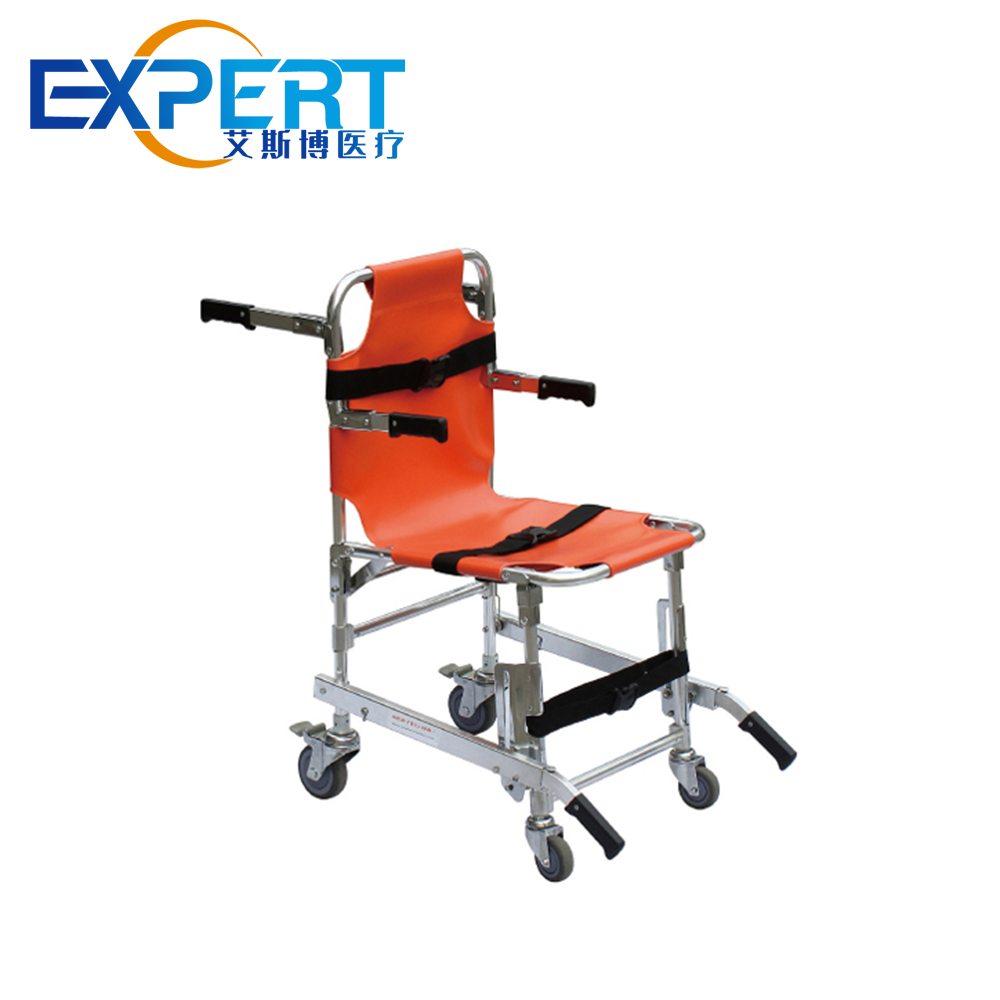عنوان
304 شارع الكاردينال الشمالي
مركز دورتشستر ، ماساتشوستس 02124
ساعات العمل
من الاثنين إلى الجمعة: 7 صباحًا - 7 مساءً
عطلة نهاية الأسبوع: 10 صباحًا - 5 مساءً
عنوان
304 شارع الكاردينال الشمالي
مركز دورتشستر ، ماساتشوستس 02124
ساعات العمل
من الاثنين إلى الجمعة: 7 صباحًا - 7 مساءً
عطلة نهاية الأسبوع: 10 صباحًا - 5 مساءً

يعد اختيار أفضل نقالة إسعاف تناسب احتياجاتك قرارًا حاسمًا يمكن أن يؤثر على كفاءة خدمات الطوارئ الطبية (EMS) ونتائج المرضى.

يُعد اختيار نقالة الإسعاف الأنسب لاحتياجاتك قرارًا حاسمًا يؤثر على كفاءة خدمات الطوارئ الطبية (EMS) ونتائج المرضى. مع توافر العديد من الخيارات في السوق، ولكل منها ميزات وقدرات متفاوتة، من الضروري فهم ما يجعل نقالة الإسعاف مناسبة لمختلف الحالات. سيساعدك هذا الدليل الشامل على تجاوز صعوبات اختيار النقالة المناسبة من خلال تغطية الأنواع والميزات الرئيسية واعتبارات التكلفة ومتطلبات الصيانة.
نقالة الإسعاف، المعروفة أيضًا باسم نقالة الإسعاف، هي جهاز طبي يُستخدم لنقل المرضى في حالات الطوارئ. صُممت لتوفير الثبات والراحة أثناء النقل مع ضمان سلامة المريض وفريق الإسعاف. يُعد فهم الأنواع الأساسية ومكونات نقالات الإسعاف الخطوة الأولى لاتخاذ قرار واعٍ.
نقالات يدوية:تُشغَّل هذه الأجهزة يدويًا، وتتطلب جهدًا بدنيًا لرفع المريض ونقله. وهي عادةً ما تكون أكثر فعالية من حيث التكلفة ومناسبة للحالات التي تكون فيها موارد الطاقة محدودة.
نقالات كهربائيةتستخدم هذه الأجهزة أنظمة تعمل بالبطاريات للمساعدة في رفع وخفض النقالة، مما يُخفف الضغط البدني على موظفي خدمات الطوارئ الطبية. وهي مثالية للاستخدام المتكرر وفي الحالات التي تتطلب تشغيلًا سريعًا وسهلاً.
نقالات السمنة:تم تصميم هذه النقالات لاستيعاب المرضى ذوي الوزن الثقيل، حيث توفر إطارات معززة ومنصات أوسع لضمان سلامة المريض وراحته.
نقالات محمولة:خفيفة الوزن وقابلة للطي، تُستخدم هذه النقالات في الأماكن الضيقة أو لعمليات الإخلاء السريع. عادةً ما تكون أقل غنىً بالميزات، لكنها عملية للغاية في بعض حالات الطوارئ.
سلامة المريض وراحته أمران أساسيان عند اختيار نقالة إسعاف. ميزات مثل مساند الظهر القابلة للتعديل، وأحزمة الأمان، والمراتب عالية الجودة تُحسّن رعاية المريض بشكل كبير أثناء النقل. فكّر في اختيار نقالات مزودة بآليات أمان متكاملة لمنع السقوط أو الحركة العرضية.
تُعد سهولة التشغيل أمرًا بالغ الأهمية لموظفي خدمات الطوارئ الطبية الذين يتعاملون باستمرار مع النقالات في بيئات عالية الضغط. تُقلل النقالات الآلية المزودة بآليات رفع وخفض آلية من الإجهاد البدني وتُسرّع مناولة المرضى. كما تُعزز أدوات التحكم البديهية والتصميم خفيف الوزن من سهولة المناورة.
تخضع نقالات الإسعاف لاستخدامات دقيقة، ويجب أن تتحمل مختلف الظروف البيئية. اختر نقالات مصنوعة من مواد عالية الجودة، مثل الألومنيوم المقوى أو الفولاذ المقاوم للصدأ. تأكد من حصولها على الشهادات اللازمة، وامتثالها لمعايير الصناعة، لضمان متانتها وموثوقيتها على المدى الطويل.
خذ بعين الاعتبار ميزات سهولة الحركة للنقالة، بما في ذلك حجم ونوع العجلات، ونصف قطر الدوران، ونظام الكبح. بالنسبة لسيارات الإسعاف ذات المساحة المحدودة، ابحث عن تصميمات مدمجة وقابلة للطي، يسهل تخزينها عند عدم استخدامها.
مع أن الاستثمار في نقالة عالية الجودة أمرٌ ضروري، إلا أن قيود الميزانية واقعٌ واقعٌ في العديد من مؤسسات خدمات الطوارئ الطبية. قيّم نسبة التكلفة إلى الفائدة بمقارنة الميزات والمتانة وتكاليف الصيانة طويلة الأمد. إليك جدول تحليل تكلفة مبسط لمساعدتك في تقييم الخيارات المختلفة:
| ميزة | نقالات يدوية | نقالات كهربائية | نقالات السمنة |
|---|---|---|---|
| التكلفة الأولية | $1,000 – $3,000 | $5,000 – $10,000 | $8,000 – $15,000 |
| تكلفة الصيانة | قليل | معتدل | معتدل |
| عمر | 5-10 سنوات | 7-12 سنة | 7-12 سنة |
| سهولة الاستخدام | معتدل | عالي | معتدل |
| راحة المريض | أساسي | عالي | عالي |
| قدرة الوزن | معيار | معيار | عالي |
تأكد من حصول فريق خدمات الطوارئ الطبية لديك على تدريب كافٍ على استخدام طراز النقالة المُختار. يُقدم العديد من المُصنّعين برامج تدريبية ودعمًا مستمرًا لمساعدة المستخدمين على تحقيق أقصى استفادة من معداتهم. يُمكن أن يُقلل هذا من خطر سوء الاستخدام ويُعزز الكفاءة العامة.
تتيح ميزة تعديل الارتفاع لموظفي خدمات الطوارئ الطبية رفع أو خفض النقالة إلى مستوى مناسب، مما يُسهّل نقل المرضى. كما يُساعد مسند الظهر القابل للتعديل على وضع المريض بشكل مريح، خاصةً أولئك الذين يعانون من مشاكل في الجهاز التنفسي.
تمنع قضبان الأمان وآليات القفل الآمنة المريض من السقوط من النقالة أثناء النقل. تُعد هذه الميزات بالغة الأهمية أثناء الحركات السريعة أو عند التنقل على أرض وعرة.
فكّر في النقالات المزوّدة بأقطاب وريدية مدمجة وملحقات إضافية. تتيح هذه الميزات تثبيت المعدات الطبية، مثل أجهزة التنقيط الوريدي وأجهزة المراقبة، وهي ضرورية أثناء نقل المرضى.
اختر نقالات مصنوعة من مواد مقاومة للماء وسهلة التنظيف للحفاظ على معايير النظافة. المراتب القابلة للإزالة والغسل مفيدة بشكل خاص للتعقيم السريع بين الاستخدامات.
بالنسبة للنقالات الكهربائية، يُعدّ عمر البطارية وخيارات الشحن من الاعتبارات الأساسية. تأكد من أن النقالة مزودة ببطارية طويلة العمر لنقل المرضى عدة مرات، وأن تكون مزودة بحلول شحن سهلة لتجنب انقطاع الخدمة.

الصيانة الدورية ضرورية لضمان عمر نقالات الإسعاف وكفاءتها. ضع جدول صيانة دورية يتضمن:
يتطلب اختيار نقالة الإسعاف الأنسب لاحتياجاتك دراسة متأنية لعوامل متعددة، بما في ذلك سلامة المريض، وسهولة الاستخدام، والمتانة، وسهولة التنقل، والتكلفة، والدعم. بفهم أنواع النقالات المختلفة وميزاتها الرئيسية، يمكنك اتخاذ قرار واعٍ يعزز كفاءة عمليات خدمات الطوارئ الطبية لديك ويحسن رعاية المرضى. إن الاستثمار في نقالة عالية الجودة وموثوقة، مصممة خصيصًا لتلبية احتياجاتك الخاصة، يضمن لك فوائد طويلة الأمد ونجاحًا تشغيليًا.
الفرق الأساسي هو أن النقالات اليدوية تتطلب جهدًا بدنيًا لرفع ونقل المرضى، بينما تستخدم النقالات الكهربائية أنظمة تعمل بالبطارية للمساعدة في هذه المهام، مما يقلل الضغط البدني على موظفي خدمات الطوارئ الطبية.
بالنسبة لمرضى السمنة، اختر نقالة مصممة خصيصًا بقدرة تحمل وزن أعلى ومنصة أوسع وإطار معزز لضمان السلامة والراحة.
تتضمن متطلبات الصيانة عمليات تفتيش منتظمة بحثًا عن التآكل والتلف، والتنظيف بعد كل استخدام، وتزييت الأجزاء المتحركة، وبالنسبة للنقالات الكهربائية، الحفاظ على عمر البطارية من خلال الشحن والاستبدال المنتظم.
نعم، تقدم العديد من الشركات المصنعة خيارات التخصيص لنقالات الإسعاف، بما في ذلك الارتفاع القابل للتعديل، ومواضع مسند الظهر، وأعمدة الوريد المتكاملة، وملحقات الملحقات لتلبية احتياجات محددة.
يُعدّ التدريب أمرًا بالغ الأهمية لضمان قدرة موظفي خدمات الطوارئ الطبية على تشغيل النقالات بأمان وكفاءة. فالتدريب المناسب يُقلّل من خطر سوء الاستخدام ويُعزّز فعالية نقل المرضى بشكل عام.